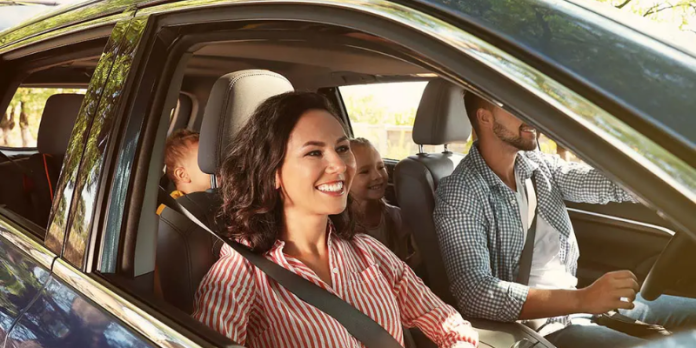Today, let’s join Goldnews24h to find out if your car insurance covers other cars you drive. This is a critical question for many vehicle owners and enthusiasts, as the intricacies of automotive insurance policies can often lead to misunderstandings and unexpected financial burdens. Whether you’re borrowing a friend’s vehicle, renting a car for a vacation, or occasionally driving a company-provided automobile, knowing the extent of your personal auto insurance coverage is paramount. This detailed analysis will delve into the various scenarios where your policy might extend beyond your primary insured vehicle, examining the technicalities of liability, collision, and comprehensive coverage. We aim to provide a clear, assertive, and logical breakdown, helping you navigate the complexities of insurance coverage to make informed decisions and ensure peace of mind on the road.
The fundamental principle of car insurance coverage

The foundational principle of car insurance often centers on the insured vehicle itself, but it can also extend to the driver, depending on the specific policy terms and the type of coverage. Most standard personal auto insurance policies are designed to cover the named insured and authorized drivers when operating the insured vehicle. However, the question of does my car insurance cover other cars I drive frequently arises in various real-world situations. Understanding whether your policy “follows the car” or “follows the driver” is crucial for preventing potential gaps in coverage. While liability coverage typically extends to the driver, other coverages like collision and comprehensive might be tied more directly to the specific vehicle listed on the policy. This distinction is vital, especially when considering situations beyond your primary vehicle.
When your policy follows you
Your personal auto insurance policy generally provides liability coverage that extends to you, the policyholder, when you are driving another person’s car with their permission. This is often referred to as “permissive use.” In such cases, your policy acts as secondary coverage, meaning the car owner’s insurance would typically be the primary coverage if an accident occurs. If the car owner’s policy limits are exhausted, your personal liability coverage could then kick in to cover the remaining damages or injuries. This aspect of coverage is essential for anyone who occasionally borrows vehicles, drivers could find themselves personally liable for significant costs beyond what the borrowed car’s insurance might cover.
When your policy follows the car
Conversely, collision and comprehensive coverage are generally tied to the specific vehicle listed on your insurance policy. This means that if you are driving another car and are involved in an accident, your personal policy’s collision coverage would typically not apply to damage sustained by the borrowed vehicle. Instead, the collision and comprehensive coverage of the car’s owner would be responsible for repairs or replacement. This is a common area of confusion, as many drivers mistakenly believe that all aspects of their personal policy will automatically transfer to any car they operate. Therefore, it is critical to confirm that the owner of any borrowed vehicle has adequate coverage themselves to protect their asset.
Driving a borrowed car: what you need to know

Driving a friend’s or family member’s car is a common occurrence, and it naturally leads to the question: does my car insurance cover other cars I drive in such scenarios? The answer largely depends on a concept known as “permissive use.” Most personal auto insurance policies include a provision for permissive use, meaning that if you have the owner’s explicit or implied permission to drive their car, your liability coverage will generally extend to you. However, it’s essential to understand the order of coverage in these situations. The car owner’s insurance policy is almost always considered the primary coverage, meaning it would pay out first in the event of an accident. Your personal policy would then act as secondary coverage, providing an additional layer of protection if the damages exceed the limits of the primary policy.
Permissive use and liability coverage
When you drive someone else’s car with their permission, your liability coverage is usually the most relevant aspect of your personal policy. This coverage protects you financially if you cause an accident that results in injury to others or damage to their property. For instance, if you borrow a car and are at fault in a fender bender, the owner’s liability insurance would first respond to the claims. If the damages are substantial and exceed the owner’s policy limits, your personal liability coverage would then come into play. This tiered system ensures that there is ample protection for third parties involved in an accident. It is always wise for both the borrower and the owner to confirm that adequate liability limits are in place to prevent any unforeseen financial exposures.
Damage to the borrowed vehicle
One of the most frequent misconceptions revolves around coverage for damage to the borrowed car itself. Unfortunately, your personal collision and comprehensive coverage typically do not extend to a car you do not own and that is not listed on your policy. If you cause damage to a friend’s car while driving it, your personal policy’s collision coverage will generally not pay for the repairs to their vehicle. Instead, the owner’s collision coverage would need to be utilized, subject to their deductible. This is why it’s critical to ascertain the owner’s coverage before borrowing their car. If the owner does not have collision coverage, or if the deductible is very high, you could potentially be responsible for the repair costs out of your own pocket. This scenario highlights the importance of open communication and understanding insurance details before getting behind the wheel of a borrowed vehicle.
Rental car insurance considerations

When renting a car, the question of does my car insurance cover other cars I drive becomes particularly pertinent, as rental agreements often push additional insurance products. Many drivers wonder if they need to purchase the extra coverage offered by rental car companies, assuming their personal policy might not apply. In many cases, your personal auto insurance policy does extend to rental cars, especially for liability coverage. However, the extent of this coverage can vary significantly, and there are several factors to consider. Credit card benefits also often provide some level of rental car insurance, primarily for damage to the rental vehicle itself. Understanding the interplay between these different layers of coverage is key to making an economical and secure choice when renting.
Personal policy extension for rentals
Most standard personal auto insurance policies will extend your existing liability coverage to a rental car you operate. This means that if you are at fault in an accident while driving a rental, your personal policy would cover damages and injuries to third parties up to your policy limits. Furthermore, if you have collision and comprehensive coverage on your personal vehicle, these coverages often extend to cover physical damage to the rental car as well. However, there are typically limitations. For instance, your personal policy might not cover “loss of use” fees charged by the rental company while the car is being repaired, nor might it cover administrative fees or diminished value of the rental car. These specific exclusions can add up, making the decision to rely solely on your personal policy a nuanced one.
Credit card rental car benefits
Many credit cards offer rental car insurance as a benefit to cardholders who use their card to pay for the rental. These benefits typically provide secondary coverage for collision and loss damage waiver (LDW) to the rental vehicle. This means that if your personal auto insurance policy covers the rental car, the credit card coverage would kick in after your personal policy’s limits are exhausted. If your personal policy does not cover physical damage to rental cars, or if you choose not to file a claim with your personal insurer, the credit card coverage could then become primary. It’s crucial to understand the specific terms and conditions of your credit card’s rental car benefits, as they often have exclusions for certain types of vehicles (e.g., exotic cars, trucks), rental durations, and geographical limitations. Always read the fine print or call your credit card provider before renting a.
When to buy rental car insurance
Despite potential coverage, buying the rental company’s liability and physical damage waivers can provide crucial protection. Additionally, if you want to avoid filing a claim on your personal policy, which could potentially lead to higher premiums, the rental company’s coverage offers a way to do so. For those renting abroad, personal auto insurance policies often have limited or no coverage outside of the United States, making rental car insurance a necessity. Evaluating your personal risk tolerance and existing coverage is key to determining whether the extra expense is justified for your rental car.
Employer-provided vehicles and coverage
For individuals who drive employer-provided vehicles, understanding the insurance landscape is crucial, as the question of does my car insurance cover other cars I drive takes on a different dimension. Generally, when you are driving a company car for business purposes, the employer’s commercial auto insurance policy is primary. This policy is specifically designed to cover liabilities and damages arising, particularly if you use the company car for personal errands or during off-hours. It is essential to distinguish between business use and personal use, as this can significantly impact which policy responds in the event of an incident. Clear communication with your employer about their insurance provisions and your personal usage is paramount to avoid coverage gaps.
Employer’s commercial policy
When you are operating a company-owned vehicle for work-related activities, your employer’s commercial auto insurance policy is typically the primary source of coverage. This policy usually includes comprehensive liability coverage for bodily injury and property damage, as well as collision and comprehensive coverage for the company vehicle itself. These policies are often structured to handle the higher risks associated with commercial driving and generally have higher limits than personal policies. It’s important to note that while your personal policy may offer some secondary coverage, relying solely on it for business use is ill-advised. Employers are legally obligated to ensure their vehicles are adequately insured for business operations, and their commercial policy will be the first line of defense in the event of an accident during work hours or for work-related tasks.
Personal use of company vehicles
A common area of confusion arises when employees are permitted to use company vehicles for personal reasons. In these situations, your employer’s commercial policy might still be primary, but there can be nuances. Some commercial policies might exclude personal use, or they might provide limited coverage for it. This is where your personal auto insurance policy could potentially offer secondary coverage for liability. It is absolutely vital to clarify your employer’s policy regarding personal use of company vehicles, including any restrictions or requirements for personal insurance. If the employer’s policy does not cover personal use, or if its limits are insufficient, you could be personally liable for damages. Understanding these stipulations helps you determine if your personal coverage would apply and what its role would be in an accident during personal use.
Non-owner car insurance: a solution for frequent borrowers
For individuals who frequently drive cars they do not own and are concerned about the extent of their personal policy, or for those who do not own a car but regularly borrow one, non-owner car insurance can be an invaluable solution. This specialized type of policy addresses the very question of does my car insurance cover other cars I drive when ownership is not involved. Non-owner insurance primarily provides liability coverage for bodily injury and property damage when you are driving a car you do not own. It acts as secondary coverage, supplementing the primary insurance of the car’s owner. This type of policy is particularly useful for drivers who frequently rent vehicles, use car-sharing services, or regularly borrow cars.
Who needs non-owner insurance?
Non-owner car insurance is ideal for several groups of individuals. Firstly, those who do not own a vehicle but frequently drive other people’s cars or rental cars can benefit significantly. Without a primary vehicle, they might not have a standard auto insurance policy to provide liability coverage. Secondly, individuals whose driver’s licenses have been suspended or revoked, and who are required to file an SR-22 or FR-44 form (proof of financial responsibility) to reinstate their license, often need non-owner insurance. This policy allows them to meet state-mandated insurance requirements without owning a car. Lastly, anyone who frequently relies on borrowed vehicles and wants an extra layer of personal liability protection, beyond what the car owner’s policy might offer, should consider non-owner coverage to ensure they are adequately protected.
Benefits of non-owner coverage
The primary benefit of non-owner car insurance is that it provides liability coverage for the driver, not the car. This means that if you cause an accident while driving a non-owned vehicle, your non-owner policy will help pay for damages and injuries to other parties, potentially supplementing the car owner’s primary insurance. This is crucial for protecting your personal assets from claims that could exceed the owner’s policy limits. Additionally, having a non-owner policy ensures continuous insurance coverage, which can help you avoid gaps in your insurance history, often leading to lower premiums when you eventually purchase your own vehicle. It also provides peace of mind, knowing you are financially protected regardless of whose car you are driving, reinforcing the answer to does my car insurance cover other cars I drive in a robust way.
Understanding your policy: the fine print
Navigating the complexities of car insurance requires more than just a cursory glance at your policy; it demands a thorough understanding of the fine print. The answer to does my car insurance cover other cars I drive is ultimately found within the specific clauses and definitions outlined in your individual policy document. Insurance policies are legal contracts, and their terms dictate the exact scope of your coverage, including scenarios involving non-owned vehicles. Simply assuming coverage based on general knowledge can lead to severe financial repercussions in the event of an accident. Therefore, it is imperative to proactively review your policy, identify key sections related to non-owned vehicles and permissive use, and not hesitate to seek clarification.
Key sections to review
When examining your policy for coverage related to driving other cars, several key sections warrant close attention. Look for clauses pertaining to “non-owned autos,” “permissive use,” and definitions of “insured” and “insured vehicle.” These sections will typically detail the circumstances under which your liability, collision, and comprehensive coverages extend to vehicles you do not own. Pay particular attention to any exclusions or limitations that might apply, such as restrictions on the type of vehicle, the duration of use, or geographical boundaries. Understanding these specific provisions will provide a clear picture of your actual coverage when you are behind the wheel of a borrowed or rented car. This proactive review can save you.
Speaking with your insurance provider
The most reliable way to definitively answer does my car insurance cover other cars I drive is to directly consult with your insurance provider. Your agent or a customer service representative can provide precise information tailored to your specific policy. They can clarify the extent of your liability, collision, and comprehensive coverage when driving borrowed cars, rental cars, or company vehicles. It is also an opportune time to discuss scenarios such as “loss of use” charges for rental cars or any specific exclusions that might impact your financial responsibility. By having a direct conversation, you ensure that you have accurate, up-to-date information, allowing you to make well-informed decisions about your coverage needs and avoid any potential gaps in protection.
Conclusion
In conclusion, understanding whether does my car insurance cover other cars I drive is crucial for every driver, as the answer is not always a straightforward yes or no. As Goldnews24h has explored, while your personal auto insurance typically provides liability coverage when you drive other cars with permission, the extent of coverage for physical damage to those vehicles, especially borrowed ones, often relies on the owner’s policy. Rental cars and employer-provided vehicles introduce additional layers of complexity, with credit card benefits and commercial policies playing significant roles. We strongly advise reviewing your personal policy thoroughly, understanding the nuances of permissive use, and considering options like non-owner car insurance if you frequently operate vehicles you do not own. By taking these proactive steps, you can ensure robust financial protection, gain peace of mind on every journey, and make confident decisions about your vehicle usage.

